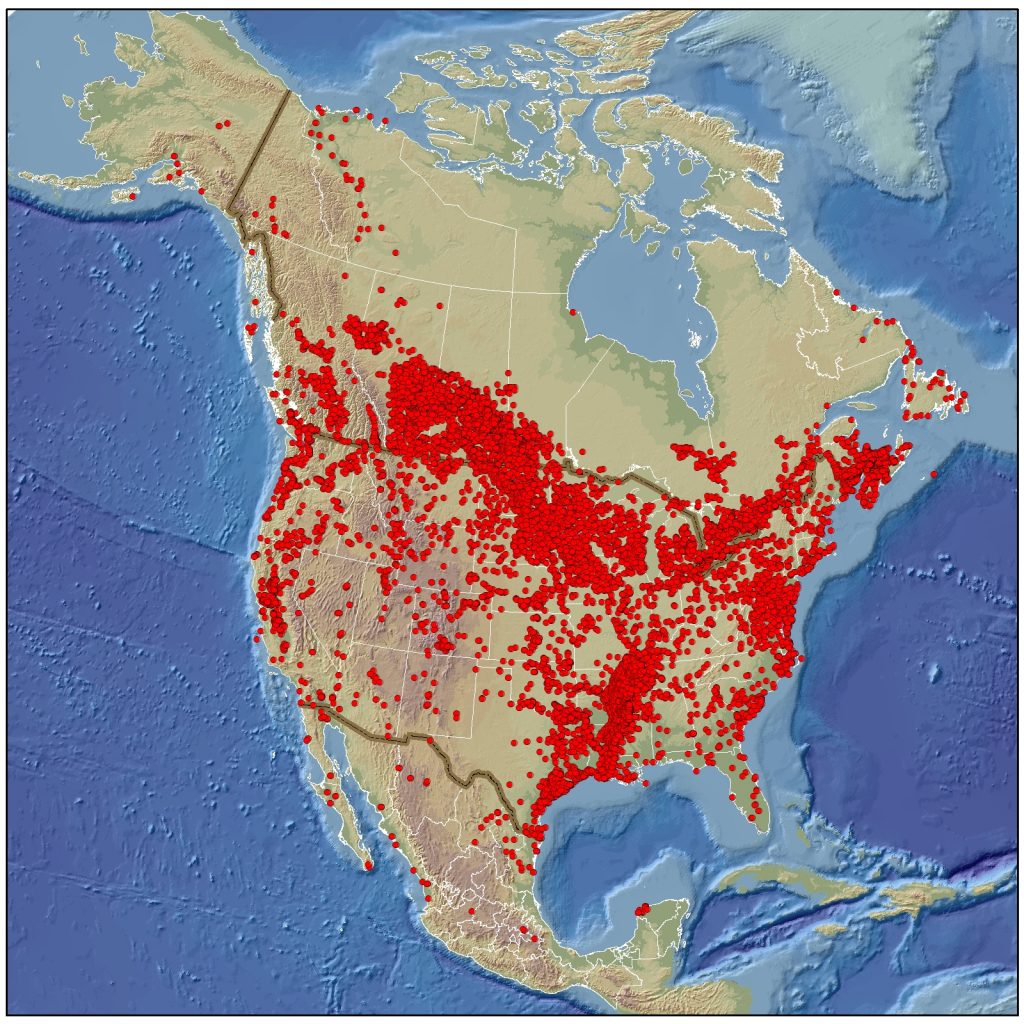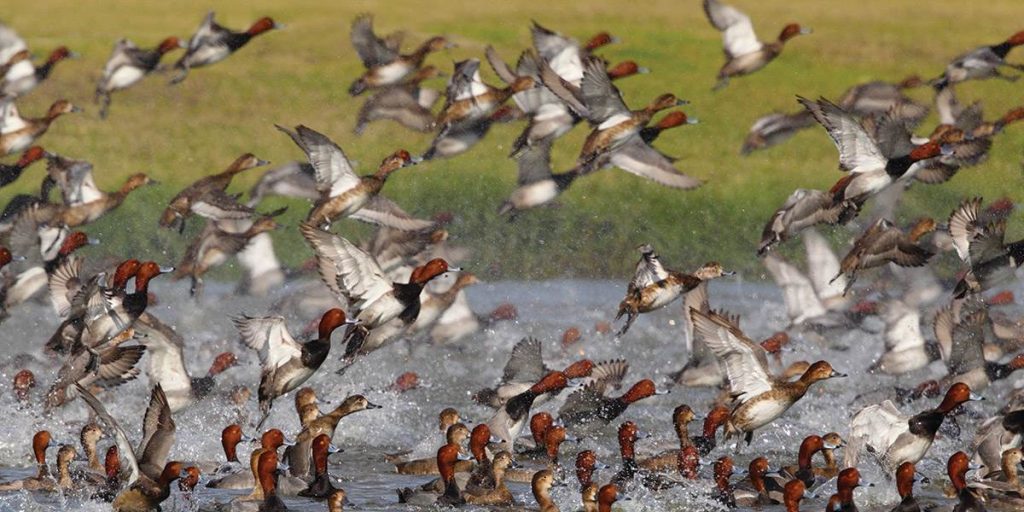DIY Duck Habitat Management on Your Land
Having your cake and eating it too is everybody’s goal in life, but we soon learn in most pursuits that’s impossible. However, it’s not necessarily the case when you put money into creating a great mallard duck habitat for yourself, your family and friends, because that investment may pay you back not only in years of recreation but also in cold, hard cash if you use it as “mitigation” for other undeveloped property you own, or that a nearby developer owns, that can be developed to a higher level. In addition, the conservation land itself is also likely to become more valuable as it produces improved hunting, fishing and outdoors recreation.
Improving land for fish and wildlife—and for hunters and anglers—has become a path to profit for many landowners as the outreach programs of Ducks Unlimited (DU) have assisted land buyers and land owners in making their land more friendly to wildlife and to eventual profit on mitigation and sometimes resale.
Dr. Tom Moorman, former chief scientist with Ducks Unlimited, says that working with landowners that are pondering how to create a duck habitat is an integral part of Ducks Unlimited’s mission.
“Those who own land and care about wetlands and wildlife can help DU protect and restore wetlands and other types of habitat on their land. By letting DU know that you, or someone you know, own land and are interested in conservation, you are helping DU achieve its mission of protecting, restoring and managing wetlands for waterfowl, other wildlife and people,” Moorman said.

Ducks Unlimited has teams of biologists and engineers that provide wetland restoration, management and protection services directly to landowners.
DU has teams of biologists and engineers that provide wetland restoration, management and protection services directly to landowners. When a private land project is matched up with wetland mitigation funds, the result is improved habitat for wildlife, and possibly also financial gain to the landowner.
“Conservation easements protect private lands. Easements are tailored to meet the needs and interests of the individual landowner, allowing for the protection of key natural habitats while continuing use of the land for economic gain or recreation,” Moorman said. “Such protection assures that large areas of riparian wetland habitats and important uplands will be preserved in perpetuity, for the benefit of waterfowl and other wildlife, and for future generations.”
DU has a long history of wetland conservation across the country, and also has relationships with landowners and agencies. This network, combined with comprehensive knowledge of the restoration landscape, enables DU to locate sites suitable for mitigation and other ecological services,” he said..
According to the National Mitigation Banking Association, mitigation banking is defined as “the restoration, creation, enhancement, or preservation of a wetland, stream, or other habitat area undertaken expressly for the purpose of compensating for unavoidable resource losses in advance of development actions, when the compensation cannot be achieved at the development site or would not be as environmentally beneficial.”
DU contributes to numerous private land restorations and mitigation projects by handling project costs, offering wetland protection in perpetuity through conservation easement contracts, providing consultation with biologists and supplying engineering design and construction services. Their conservation efforts extend well beyond the realm of waterfowl to benefit over 900 species of wildlife (including numerous species listed as threatened and endangered), improve water quality and promote ecosystem health across the continent.

Ducks Unlimited has many conservation projects across the continent.
“Contact DU’s regional offices for free help from their experts,” Moorman advised. “Check with regional offices and they can often get one of our biologists out there to provide advice. Some state agencies also do this, but DU has particular expertise in managing for waterfowl.”
Even if your land has not historically had a duck habitat, good management can bring them in, Moorman advised.
“Some of the best areas are close to managed waterfowl refuges, within 25 miles or so. It’s great if you can get neighbors to participate also,the more of these areas that are close together, the more birds you’ll all have,” Moorman noted.
Adam Putnam, CEO of DU, notes that habitat work produces up to 30 percent of the funding for Ducks Unlimited projects around the continent.
“State agencies match our funds to stretch conservation dollars further. DU has conserved or restored over 14 million acres since founding. Some are a dozen acres, some are thousands of acres. We help more than hunters—outdoor recreation, bird watchers, anglers, kayakers and lots more. And of course these marshes are great water cleaners. We believe in public lands access and management—not untouched preservation,” Putnam said.
Here’s how the process works, according to Moorman.
“A landowner proposes a bank, designs it with an expert from DU or the state wildlife agency and then takes the plan to the U.S. Corps of Engineers for approval. If approved, he gets x-number of credits to sell. Credits might be worth $3000 a credit. He can sell those credits to a developer who is developing wetlands elsewhere to offset.
“The developer has to buy three acres of credits for every one destroyed. The landowner pays the cost of restoring the wetland, but you can definitely profit from this work as well as help waterfowl. You maintain the wetlands for an extended period as the holder of the bank. The developer must purchase credits close to the site of his destroyed wetland, with approval of the Corps of Engineers. So both sides are profiting, and so is wildlife.”
Moorman said that it also may be possible to benefit by donating some “Priority Wetlands” as a tax hedge. DU biologists inspect the property and if it’s found suitable, they approve for a conservation easement.
“The owner gives up rights to develop, but still can hunt and fish, manage and harvest timber and enjoy it in other ways. The property is appraised with the easement and without the easement the difference is deductible on federal taxes over a 16-year extended period.”

Managed duck habitats can be quite beneficial to landowners and waterfowl, alike.
There are some cautions, however, according to Moorman.
“Have a business plan to include ALL your upfront costs to assure you make money after everything is added in,” he advised. “Contact your regional DU office and get the staffer who handles mitigation banking. You then have the option of hiring DU to design the wetland. We sometimes participate in the mitigation bank as a joint venture—we are allowed to make a profit on mitigation credits if we put it back into wetland conservation, so it’s a revenue source that helps fund our mission. We can be either a contractor or a business partner. You still own the property that’s in the bank, but it must remain in wetlands. With a conservation easement on it, it can be sold but the next owner must also maintain the wetlands. It assures long-term preservation, and it can make you a profit.”
Local banks are often willing to assist in these programs. Brandon Simpson is assistant vice president from First South Farm Credit, which is a member-owned cooperative with 9,000 members in 44 branches in Alabama, Mississippi and Louisiana, all prime Mississippi Flyway country.
Simpson says getting pre-approved for a loan on mitigation lands buying and development simply entails stopping into a First South office and providing some basic information, such as tax returns, pay stubs, driver’s license, sometimes bank statements and some other data in order to tailor a program for the customer and issue a pre-approval letter.
Contacts
First South Farm Credit
800-955-1722
